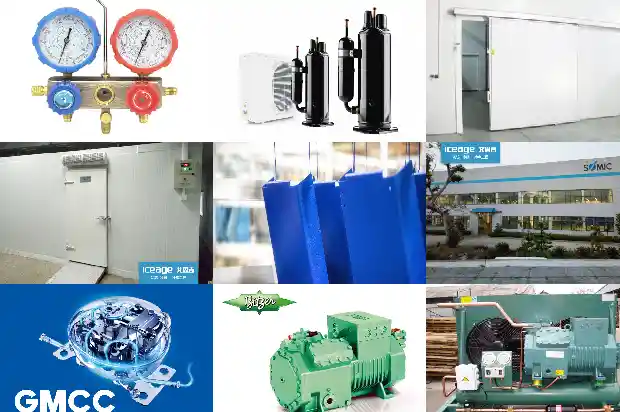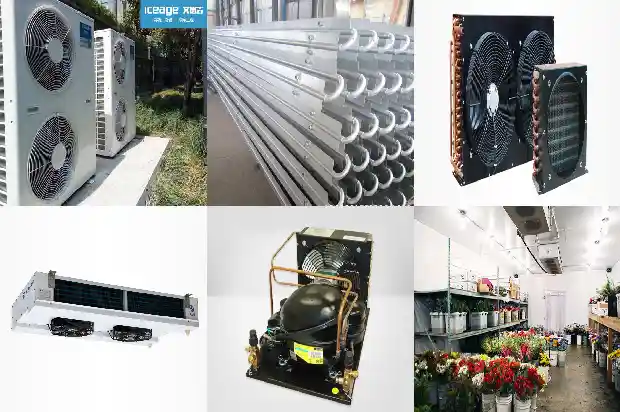Basic Faults and Preventive Maintenance of Water - cooled Units
2025-02-20
Preventive Maintenance of the Unit
I. Refrigeration Compressor
- Oil Change: The unit must have its refrigeration oil changed once a year, or decide whether to change the oil in advance according to the actual situation or the conclusion of oil analysis.

- Oil Filter Replacement: Replace the oil filter when the oil pressure drops by 30% or after the unit has been operating for half a year. At the same time, check if there are metal shavings in the filter to confirm the internal wear condition of the unit.
- Slide Valve Tightening: Check and tighten the pipeline connections of the slide valve.
- Coil Inspection: Check the solenoid valve coil of the slide valve.
- Compressor Motor Inspection:
- Check the insulation of the motor.
- Add grease or lubricating oil to the motor bearings.
- Check the contacts of the motor starter.
- Check the contactor of the motor starter.
II. Oil Return System
- Replace the dryer - filter of the oil return system.
- Clean the nozzle of the oil ejector.
- Clean the deposits in the sedimentation elbow.

- Check that the solenoid valve in the ejector circuit operates normally.
- Check that the connection pipelines of the entire oil return system are unobstructed.
III. Evaporator and Condenser
- Check the water flow of chilled water and cooling water.
- Check the water flow switches of chilled water and cooling water.
- Check the refrigerant charge.
- Check the screws of the water chambers and end - covers of the evaporator and condenser. Confirm that there is no water leakage.
IV. Refrigerant Charge Inspection
- After the unit stops being used, the refrigerant charge should be checked and adjusted.
- After the compressor and water pump have been shut down for four hours or longer, the pressure and temperature of the condenser and evaporator reach equilibrium. At this time, the refrigerant liquid level should be visible through the sight glass.
- Record the refrigerant liquid level. Compare it with the original record to judge the sealing condition of the unit.
V. Starter Cabinet
- Check and confirm the overload protection setting value of the air switch.
- Clean the accumulated dust inside the starter cabinet.
- Check the wiring of the starter cabinet and tighten it.
- Check the contactor and its contacts.
- Conduct an empty - operation test of the starter cabinet.
VI. System Leak Detection
- The refrigerant side of the unit has undergone strict leak - detection procedures in the factory and during commissioning.
- After the unit is in operation, the high - pressure part should be checked again with a leak detector to ensure the tightness of all connections.
- If a leak point is found, it should be dealt with immediately. In general, tightening the union nuts or flange bolts can eliminate the leak point. However, there may also be a situation where the refrigerant must be recovered first, and then the leak point is dealt with. For example, a leak at a welded joint.
VII. System Pressure - Leak Detection
- Charge nitrogen into the system to 25 - 50 PSIG. Ensure that the pressure reaches all parts of the system. Slightly open the oil - filling valve and use a leak detector to check for refrigerant.
- Check every joint and weld carefully. Spend as much time as possible. The leak - detection equipment used must be sensitive and reliable.
- Open the top air - release valves of the evaporator and condenser to confirm that no refrigerant is detected. If refrigerant is found, remove the end - cover to eliminate the internal leak.
- Confirm that the system is completely sealed. Release the gas from the charging valve into the system at an appropriate flow rate to achieve a certain purging effect.
VIII. System Vacuum Extraction and Drying
- Connect a high - efficiency vacuum pump and a mercury vacuum gauge in series to the charging valve of the system.
- Open all the connecting valves, air - extraction valves, and the valve of the vacuum gauge in the system. Confirm that all valves communicating with the atmosphere are closed.
- Start the vacuum pump and evacuate the system to a vacuum degree of 5 mmHg.
- If possible, pass hot water at 50 °C through the system to accelerate the evaporation of the liquid in the system and improve the dryness.
- Maintain the vacuum degree for 8 hours. If the vacuum degree rises back to no more than 6.3 mmHg, the vacuum degree test is considered qualified.
- If the rise of the vacuum degree exceeds the standard, the leak - detection work must be repeated.
Related Articles
- Composition and Common Faults of Screw Refrigeration Compressors
- Common Faults and Solutions of Central Air - conditioning Chiller Units
- Common Faults of Industrial Chillers
- Common Faults and Corresponding Solutions of Chillers During Use
- Analysis and Troubleshooting of Common Faults in Air - source Heat Pumps
- Maintenance Methods for Faults in Screw Refrigeration Air - conditioner Compressors
- Common Faults and Troubleshooting Methods of the Moving Mechanism of Piston Compressors
- Analysis of Common Faults in Compressor Overcurrent and Burnout
- What are the reasons for the inactivity of the automotive air conditioning compressor? What are the common faults?
- Common Faults of HVAC Fan Coil Units
- Common Operating Faults and Treatment Methods of Centrifugal Compressors
- Common Four Faults and Replacement Methods of Scroll Compressor
- Analysis of Refrigeration Compressor Motor Faults
- Analysis and Treatment of Common Low-Pressure Faults in Chillers
- Analysis and Treatment of Common Low Pressure Faults in Chillers
- Common faults in refrigeration system (discharge temperature and pressure)
- Common Faults of Screw Compressor
- Essential for Maintenance! Parameters and Phenomena of Normal Operation of Refrigeration and Heating Systems
